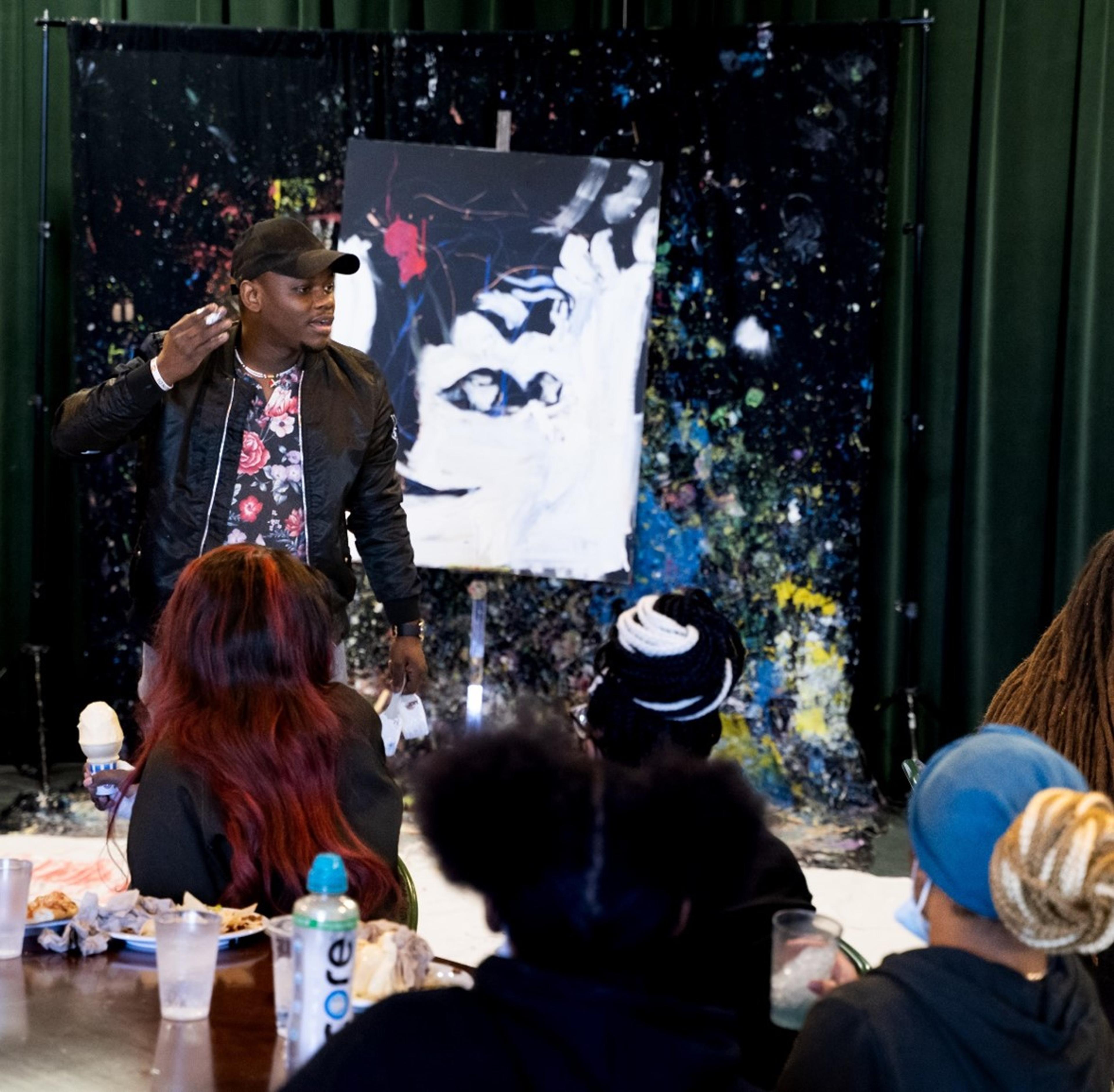
Students from Duluth high schools visit the museum on a field trip coordinated by the Black Community Committee, and interact with Hank Willis Thomas’ The Black Survival Guide, or How to Survive a Police Riot.
Tweed Museum of ArtPartner Story
The Tweed Museum of Art invited local, Black community members into the museum with focused programming for the first time and provided a space for their voices to be heard.
Listening to Communities and Providing Space for Healing
Duluth, Minnesota, home to The Tweed Museum of Art, is dominantly white, with BlPOC making up only 2.3% of the population. The area is also home to a troubled history. On June 15, 1920, three Black men were lynched by a large white mob after unsubstantiated accusations were raised against them. This tragedy, barely over 100 years old, still lives vividly in the collective memory of Duluth residents.
The Tweed recognized this piece of Duluth’s history needed to be addressed and that the museum should make a pointed effort to include the Black/African American community of Duluth, both in exhibitions and in decision-making.
Earning Trust
Tweed Museum staff partnered with Art Bridges to bring the exhibition, Black Survival Guide, or How to Live Through a Police Riot, to their institution and pair it with programming initiatives that, for the first time in the institution’s history, would actively seek to engage Black community members. According to museum staff, “In Duluth, there is no money for many areas in the cultural sector and very little has been done to promote Black artists.”
By partnering with Art Bridges, The Tweed sought to earn the trust of this underrepresented community by offering a space for them to educate the institution on their needs.

A local artist leads area high school students in a speed painting demonstration set to music at The Tweed Museum of Art.
Making Connections
Tweed staff were able to hire two local artists to coordinate a paid Black Community Advisory Committee using funding provided by their partnership with Art Bridges. The committee addressed “…urgent themes, particularly in Minnesota’s primarily white Northland, focusing on social justice, being Black, endured trauma, and healing through the arts.”
Members of the committee met regularly and organized two public events to work in conjunction with the Hank Willis Thomas exhibition. One program was a public opening reception for the exhibition, where BlPOC/Black community members were invited to participate in a workshop led by artist Diona Johnson.
Participants included younger adults and seniors and employed a variety of media, including poetry. Tweed staff members felt this workshop brought communities together and was exceedingly well received. The second public program invited BlPOC/ Black youth to engage with the exhibition.
The committee also worked to bring in public high schools during a global pandemic and, according to Tweed staff, on a day that was so cold, many Duluth schools were closed. Two public schools were able to send students to the museum for the field trip.
At the museum, students, along with their chaperones, attended three workshops led by Black artists. The workshops included speed painting, a calming landscape painting activity, and hair braiding demonstrations. The well-received workshops had participants laughing and connecting warmly with one another and the artists.
Why We Love This Project
We love that The Tweed did not just design programming they felt would engage the Black community but actively sought input, centered community leadership, and listened to the needs and desires of the people.
As museum staff stated, “Tweed has begun… the decolonization process…. This project, funded by Art Bridges, has been a game-changer, and the Tweed has started a wonderful relationship with Duluth’s BlPOC/Black communities that we must continue.”
This important first step for The Tweed Museum of Art has laid the groundwork for continued growth and healing through the arts.
Latest News

Welcome Anne Kraybill, CEO
We are pleased to announce Anne Kraybill as Chief Executive Officer of Art Bridges!
Read More